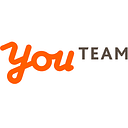The Intellectual Property (IP) of technological organizations is one of the most important things needed to be protected. As almost every piece of information is possible to find and distribute, it becomes harder to protect the IP from being stolen or copied.
What Is Intellectual Property?
Intellectual property is a set of intangible assets which are legally protected and belong to a certain company.
IP rights are given to the creators of the original work which is a result of intellectual work. Some of the works have the automated guarantee of protection which is named copyright. But some need to get the required grants from the government before it is protected.
Talking about the IP categories which are protected by law can be defined the following:
- Patent (valid up to 20 years). After you get the patent for your software you can be sure that it won’t be produced and sold by other companies. Although, they may apply to license it.
- Trademark (valid for 10 years). This category protects names, symbols, phrases, and even sounds if it is a part of a brand as it is what companies use to build a reputation.
- Copyright (valid during the lifetime of the author + additional 50 years). It is a way of protecting written or artistic expressions kept on physical media, such as movies, books, songs. Copyright protects not the whole idea but only how it was expressed.
- Trade secrets. This category protects data, devices, or some specific pattern that gives an advantage over the rivals. To get protection by law a business must prove that this kind of information is valuable for the company and protection measures were taken.
5 Ways to Protect Your Software Intellectual Property
When the company produces a product of high significance it is important to know how to protect it so another company couldn’t steal it. According to US law, there are some ways your company can protect the information from copying.
File for Copyrights, Trademarks, and Patents
Copyright (©). Such protection obtains as long as the software is being created. There is also a recommendation to register the product not only naturally but also in office for having a wide range of protective laws if there will be a need for it.
Trademarks (™). Such protection can be obtained with online registration with the US Patent and Trademark Office (USPTO). For this process, it is recommended to find a lawyer as this process is quite time-consuming.
Patents (®). If you want to protect your software if it has some features which give your company advantages compared to your competitors then you can do it online by filing for the patent application with USPTO online.
Sign Confidentiality or Licensing Contracts
To protect your software from any leaks of private information it is essential to prepare agreements that will be signed by employees and lawyers. Among such are:
- Confidential Disclosure Agreement (CDA)
- Secrecy Agreement (SA)
- Proprietary Information Agreement (PIA)
- Non-Disclosure Agreement (NDA)
Sign IP Assignment Agreement with Developers
IP Assignment Agreement is essential in the document while developing the software as it helps to protect the software from being sold or used by developers for their own purposes. They will know that this document will be used to take legal action if something happens.
Check Source Code Licenses
Source code escrow services will be the best way of protecting the software from being modified later. These services ensure that participants of the development process are protected by a third-party agent who holds the software’s information.
Implement Security Measures
Talking about the most popular and useful measures in security protection, there are the following:
- Use strong passwords for all systems, PCs, and networks.
- Update the software regularly.
- Use Virtual Private Networks (VPN).
- Use Wi-Fi Protected Access 2 (WPA2).
- Establish a Disaster Recovery Plan (DRP).
It won’t be a bad choice to also include some training courses for your employees about security measures and how to improve them.
Want to know more about the protection of intellectual property? Check out our blog.
